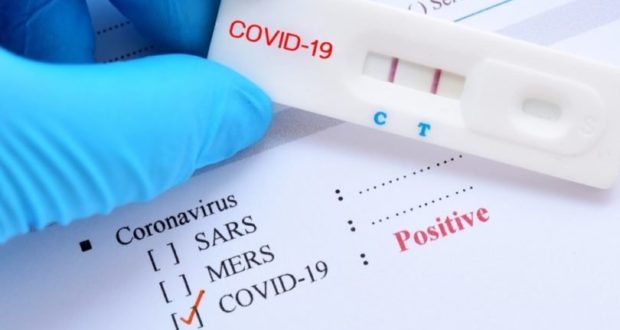على عكس التوقعات التي روج لها بشدة السياسيون ووسائل الإعلام ومؤسسات الصحة العامة ، شهد البلغار والرومانيون أعدادًا منخفضًة من إصابات COVID-19 هذا الصيف حيث استمروا في رفض أخذ لقاحات COVID.
مرضى الكورونا الذين تعافوا أقل عرضة للإصابة خلال الموجة الأخيرة من الوباء مقارنة بالأشخاص الذين تم تطعيمهم ضد COVID 😉
تتمتع دولتا أوروبا الشرقية بأدنى معدلات التطعيم في الاتحاد الأوروبي وعدد قليل من الإصابات بفيروس كورونا.
في الواقع ، تمتلك بلغاريا ورومانيا بعضًا من أدنى معدلات الإصابة بـ COVID لكل 100،000 شخص في أوروبا ، وفقًا لتحليل إحصائي تم إجراؤه في 22 أغسطس للدول الأوروبية.
“معدل التطعيم الحالي في رومانيا هو النصف مقارنة مع معدل التطعيم في بلغاريا (0.13 لقاح لكل 100 نسمة في المتوسط في الأيام السبعة الماضية) و 7.5 مرات أقل من متوسط الاتحاد الأوروبي (0.45 لقاح لكل 100 نسمة) ،” وفقًا لـ Romania Insider. “على الطرف الآخر ، أعطت الدنمارك 0.94 جرعة لقاح لكل 100 نسمة في المتوسط خلال الأيام السبعة الماضية.” معدلات التطعيم في بلغاريا ورومانيا منذ إطلاق اللقاح في عام 2020 لا تختلف اختلافًا كبيرًا.
بينما قال المنشور إن “عدد حالات COVID-19 الجديدة قد ارتفع إلى أعلى مستوى منذ نهاية مايو” ، فشل المقال في توفير السياق اللازم.
بلغت حالات الإصابة بفيروس كورونا المستجد في رومانيا ذروتها عند ما يقرب من 60.000 في نوفمبر 2020 ، قبل إتاحة اللقاح.
خلال الصيف ، لم يؤد معدل التطعيم في رومانيا البالغ 25 في المائة إلى زيادة عدد الإصابات. “يقول المسؤولون إن رومانيا تلقت أكثر [من] 16 مليون جرعة من العديد من اللقاحات الغربية الصنع ولكن تم استخدام أقل من 55 في المائة ، حيث انخفض عدد اللقاحات التي يتم تناولها يوميًا إلى حوالي 20000 من 100000 في الشهر الماضي” ذكرت.
اعترف المنشور بأن “تباطؤ معدل الإصابة قد أضعف الزخم بالنسبة للبعض في رومانيا للحصول على التطعيم: تم الإبلاغ عن 31 حالة جديدة فقط من Covid-19 وخمس وفيات يوم الخميس ، إضافة إلى إجمالي 1.08 مليون إصابة و 33786 حالة وفاة”.
على سبيل المثال ، شهد أسبوع 5 يوليو / تموز انخفاضًا في 285 حالة مؤكدة. في حين شهدت الأسابيع العديدة الماضية من شهر أغسطس زيادة إلى ما يقرب من 4000 حالة في أسبوع واحد ، إلا أنها لا تزال أقل بكثير من معدلات ما قبل التطعيم والأشهر الأولى من عام 2021.
شهد 29 مارس 38000 حالة إصابة مؤكدة بـ COVID ، واستمرت الإصابات في الانخفاض طوال فصل الربيع.
استمر الرومانيون في رفض لقاحات COVID ، مما دفع البلاد إلى بيع جرعاتها الفائضة إلى الدنمارك ودول أخرى.
وبالمثل ، لم يقنع القادة السياسيون البلغاريون مواطنيهم بالتمرير.
شهدت البلاد أيضًا صيفًا بطيئًا ، مع انخفاض الإصابات طوال فصل الربيع. حاليًا ، يعتبر 16 بالمائة فقط من سكانها البالغين ملقحين بالكامل.
أفاد راديو بلغاريا أنه “اعتبارًا من 14 أغسطس ، تلقى 20.1 ٪ من السكان البالغين في بلغاريا جرعة واحدة على الأقل من اللقاح ضد Covid-19 ، و 18.2 ٪ تم تطعيمهم مرتين ، وفقًا لبيانات بوابة معلومات فيروس كورونا الفردية”.
شهدت معظم أشهر هذا الصيف أقل من 1000 حالة مؤكدة أسبوعيًا من COVID.
ارتفاع معدلات التطعيم لا يترجم بالضرورة إلى انخفاض في COVID وربما يؤدي إلى انتشار أعلى لمتغير دلتا. ثبت أن المناعة الطبيعية ، التي تأتي من الإصابات السابقة ، تساعد الإسرائيليين أكثر من اللقاح.
ذكرت صحيفة ناشونال نيوز الإسرائيلية أن “مرضى فيروس كورونا الذين تعافوا من الفيروس كانوا أقل عرضة للإصابة خلال الموجة الأخيرة من الوباء مقارنة بالأشخاص الذين تم تطعيمهم ضد COVID ، وفقًا للأرقام المقدمة إلى وزارة الصحة الإسرائيلية”.
لدى الأوروبيين أسباب أخرى للتردد بشأن اللقاحات.
“تم الإبلاغ عن أكثر من مليوني حدث ضار و 21000 حالة وفاة إلى قاعدة بيانات التفاعلات الدوائية التابعة للاتحاد الأوروبي (EU) بعد استخدام لقاحات COVID المتاحة حاليًا” ، وفقًا لتحليل موقع LifeSite في 26 أغسطس.
المصدر: LifeSiteNews
Bulgaria and Romania have low vaccination rates – and low COVID rates
Matt Lamb – The two Eastern European countries have the lowest vaccination rates in the European Union and few COVID infections.
Contrary to the expectations heavily promoted by politicians, media, and public health establishment, Bulgarians and Romanians saw a low number of COVID-19 infections this summer as they continued to refuse to take the COVID vaccines.
In fact, Bulgaria and Romania have some of the lowest rates of COVID infections per 100,000 people in Europe, according to an August 22 statistical analysis of European countries.
“The current vaccination rate in Romania is half compared to that of Bulgaria (0.13 vaccines per 100 inhabitants on average in the last seven days) and 7.5 times lower than the EU average (0.45 vaccines per 100 inhabitants),” according to Romania Insider. “On the opposite end, Denmark has administered 0.94 vaccine doses per 100 inhabitants on average over the last seven days.” Bulgaria and Romania’s vaccination rates since the 2020 release of the jab are not significantly different.
The two countries sandwich Denmark for lowest infection rates on the continent.
While the publication said that “the number of new COVID-19 cases has risen to the highest level since the end of May,” the article fails to provide the necessary context.
Romania’s reported COVID cases peaked at nearly 60,000 in November 2020, before a vaccine was made available.
Through the summer, Romania’s 25 percent vaccination rate did not lead it to experience a surge in infections. “Officials say Romania has received more [than] 16 million doses of several western-made vaccines but less than 55 per cent have been used, as the number of vaccines administered daily has dropped to around 20,000 from 100,000 last month,” the Irish Times reported.
The publication admitted “a slowing infection rate has weakened the impetus for some in Romania to get vaccinated: only 31 new cases of Covid-19 and five deaths were reported on Thursday, adding to a national total of 1.08 million infections and 33,786 fatalities.”
For example, the week of July 5 saw a low of 285 confirmed cases. While the past several weeks of August have seen an increase to almost 4,000 cases in one week, it’s still much lower than pre-vaccination rates and the early months of 2021.
March 29 saw 38,000 confirmed cases of COVID, and infections continued to drop throughout the spring.
Romanians have continued to reject the COVID vaccines, leading the country to sell its surplus doses to Denmark and other countries.
Bulgarian political leaders have likewise not convinced their citizens to get the jab.
The country has also experienced a slow summer, with infections decreasing throughout the spring. Currently only 16 percent of its adult population is considered fully vaccinated.
“As of 14 August, 20.1% of the adult population in Bulgaria have received at least one dose of vaccine against Covid-19, 18.2% are double-vaccinated, Single Coronavirus Information Portal data show,” Radio Bulgaria reported.
Most months this summer saw fewer than 1,000 weekly confirmed cases of COVID.
High rates of vaccination do not necessarily translate to a decrease in COVID and potentially lead to a higher spread of the delta variant. Natural immunity, which comes from previous infections, has been proven to help Israelis more than the vaccine.
“Coronavirus patients who recovered from the virus were far less likely to become infected during the latest wave of the pandemic than people who were vaccinated against COVID, according to numbers presented to the Israeli Health Ministry,” Israel National News reported.
Europeans have other reasons to be hesitant about the vaccines.
“More than 2 million adverse events and 21,000 deaths have been reported to a European Union (EU) drug reaction database following the use of currently available COVID jabs,” an August 26 LifeSite analysis found.
 Agoraleaks Agoraleaks
Agoraleaks Agoraleaks







